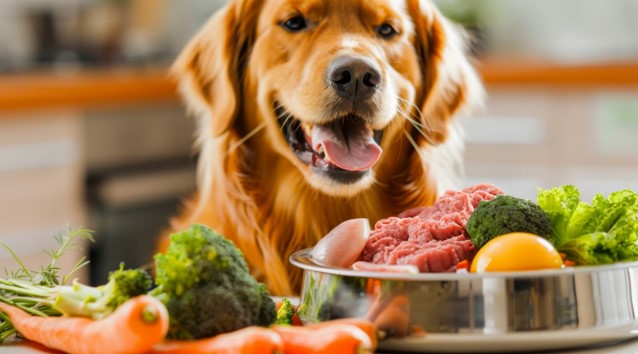11 Vegetables That Are Safe For Dogs To Eat
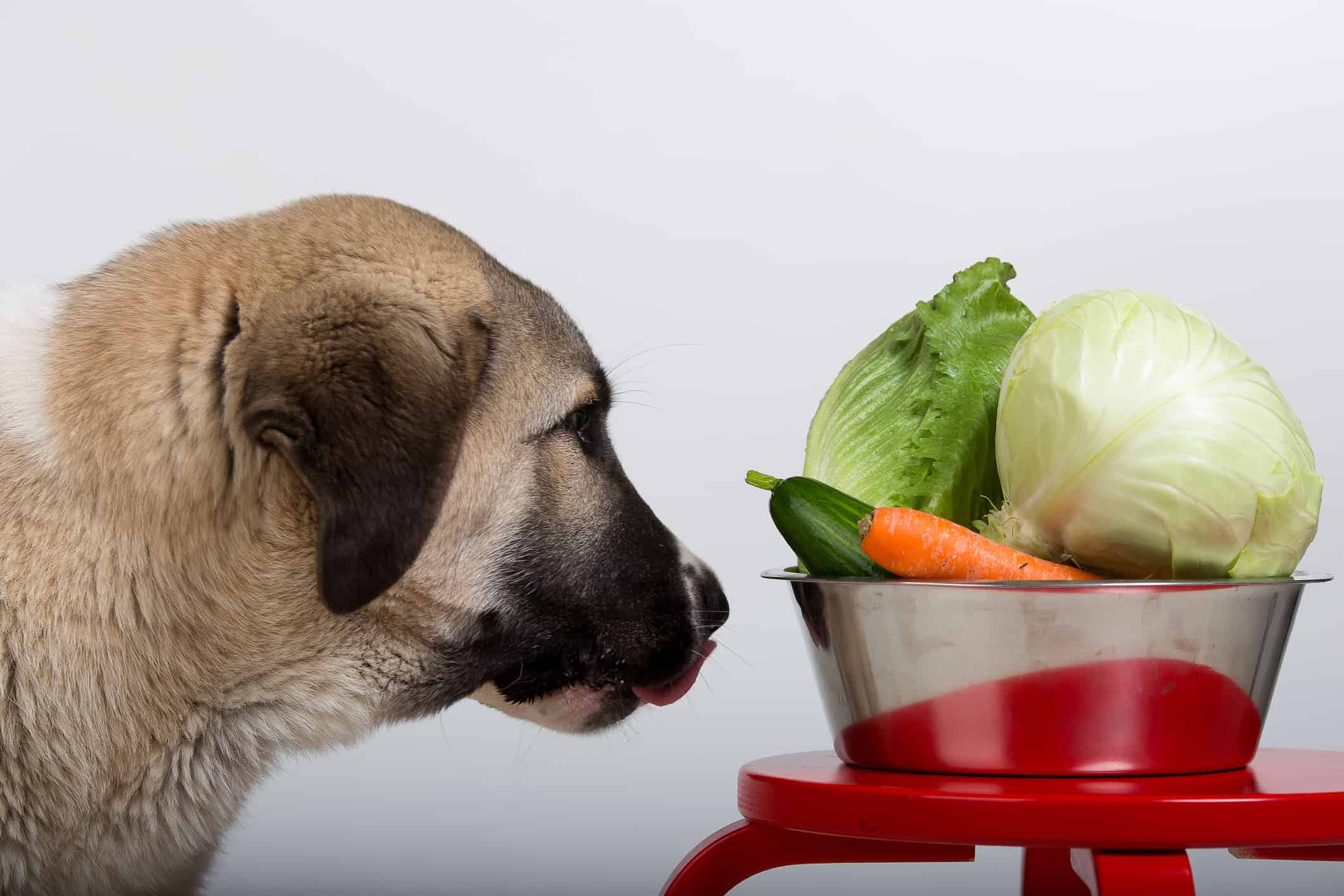
↓ Continue Reading To See This Amazing Video
Vegetables are a great treat for dogs, whether you want some healthy options or are just looking for something new your dog will love.
Some vegetables that are safe for dogs to eat include carrots, pumpkin, sweet potato, green beans, cucumber, and butternut squash. Vegetables are best served plain, chopped into bite-sized pieces, and in small amounts.
Some dogs are picky eaters, so you may need to try various vegetables until you find their new favorite. In addition, be sure to always introduce new foods slowly to avoid upsetting your pup’s tummy.
In this article, we’ll discuss 11 vegetables that are safe for dogs to eat and how to serve them.
Should Dogs Eat Vegetables?
Vegetables are great for dogs! As omnivores, dogs need vitamins and nutrients from both meat and plant-based foods.
This is why you might see vegetables in wet dog food, or on the ingredients list of your pup’s kibble. It’s important to know that dogs don’t need additional veggies if they’re eating a balanced dog food – but they do make excellent, healthy snacks.
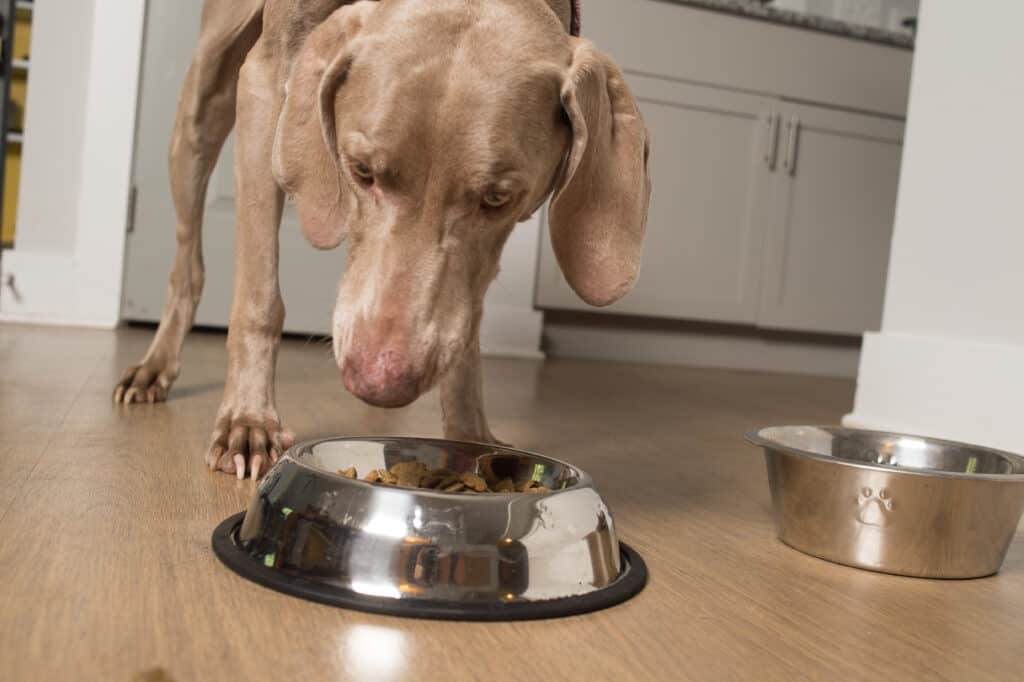
©Laura Beach/Shutterstock.com
How to Prepare Vegetables for Dogs
While vegetables are a great treat for your dog, there are some things to keep in mind when preparing them. Here’s how to best prepare veggies for your pup:
- Wash your vegetables just like you would when serving them for humans. Dogs are also sensitive to the pesticides and chemicals used in the growing process!
- Cut them into small pieces to avoid choking hazards or feeding portions that are too large.
- Restrict all treats to less than 10{95221ed7c1b18b55d17ae0bef2e0eaa704ccc2431c5b12f9d786c88d1acb538d} of your dog’s daily diet. This includes healthy treats like veggies.
- Feed new foods in small amounts. Large amounts of new foods can cause stomach upset, especially for dogs with sensitive tummies.
- Some vegetables, like potatoes, are toxic when raw and must be cooked. And sometimes, the entire plant won’t be edible – so always do your research before feeding new foods.
- Most can be served raw, cooked, or frozen. Avoid canned vegetables with high amounts of salt or other preservatives.
- When cooking veggies for your dog, avoid adding seasoning, butter, or oil. These make them less healthy, and some spices can even be toxic to your pup.
11 Best Vegetables for Dogs
Below we’ll discuss 11 of the best vegetables for dogs. These are veggies that are healthy, and that your dog is likely to eat!
There are some additional veggies that are good for dogs, but you might need to hide them in baked treats or even purchase dog food with them as ingredients. For instance, most dogs won’t eat plain lettuce or other leafy greens.
Of course, every pup is different – my late dog Charlie would hardly eat veggies at all, while my sister’s dog adores them!
1. Carrots
Carrots contain fiber, vitamin A, potassium, and other essential vitamins and nutrients. They’re also good for your dog’s teeth if they chew on them.
Some dogs will use carrots like a chew, especially frozen carrots. It takes them a long time to get through the whole thing, and it keeps them occupied.
Of course, there are other dogs who can eat a whole carrot–frozen or not–in seconds. It really depends on their size and how strong of a chewer they are.
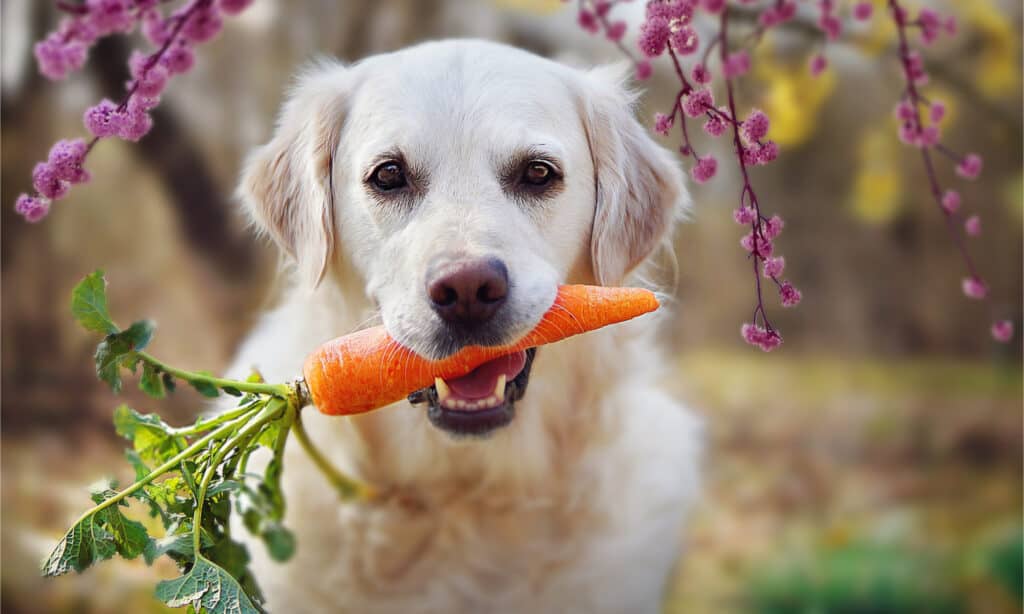
©Stickler/Shutterstock.com
2. Pumpkin
Pumpkin is considered a superfood for dogs. It’s an ingredient in many homemade dog treats, and is often used to top kibble as a digestive aid.
Before adding anything to your dog’s food on a consistent basis like this, it is important to speak to your veterinarian. This is especially true if your dog is having digestive upset, as they might need veterinary treatment rather than a diet change.
Pumpkin can be fed to dogs in a variety of ways, but unseasoned and unsalted canned pumpkin is most popular. Or, you can feed them your scraps from pumpkin carving in the fall so that they don’t go to waste!
Just remove the seeds and rind first, and cook the pumpkin so that it’s easy to digest.
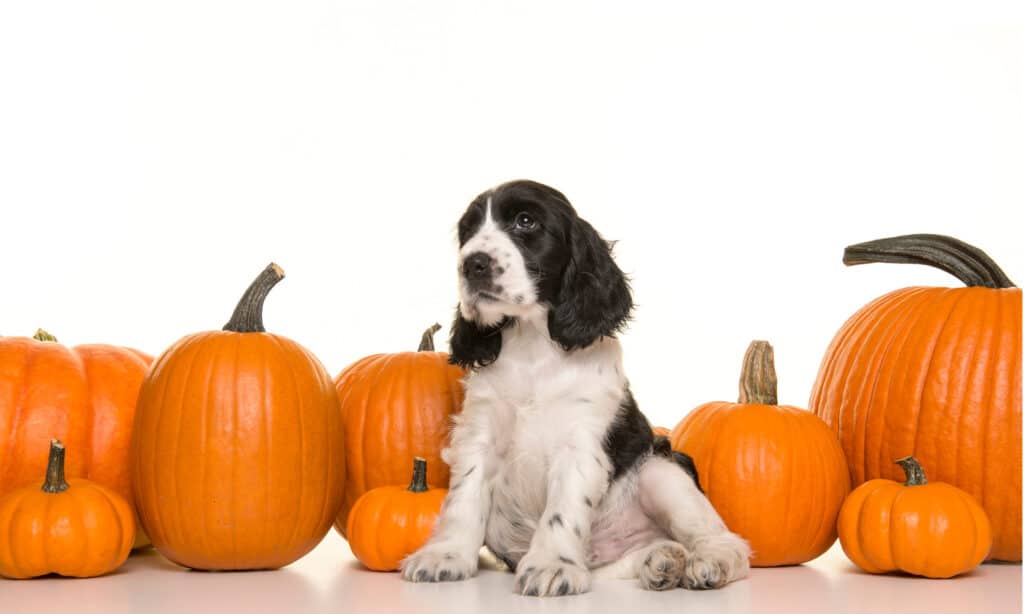
©iStock.com/MirasWonderland
3. Green Beans
My veterinarian recommends green beans as a treat for dogs trying to lose weight. They’re packed with vitamins and nutrients, and also contain large amounts of fiber.
Green beans can be served raw or cooked, but avoid seasoning them. Most canned green beans are also a no-go, since they contain large amounts of salt and other preservatives.
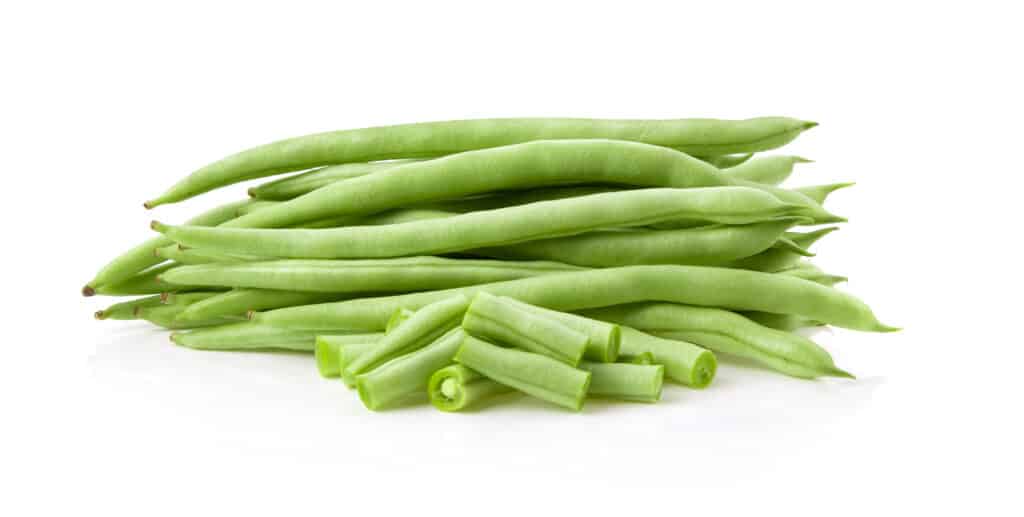
©pukao/Shutterstock.com
4. Cooked Sweet Potato
Sweet potato is another popular dog treat ingredient. They’re an excellent source of vitamin A, which aids in eye, skin, coat, muscle, and nerve health.
Raw sweet potatoes are toxic to dogs because they contain tannins. However, the tannins are removed during the cooking process, making them safe to eat.
Sweet potatoes are typically served mashed, mixed into dog treats, or as a kibble topper. You can also cut small pieces and feed them that way!
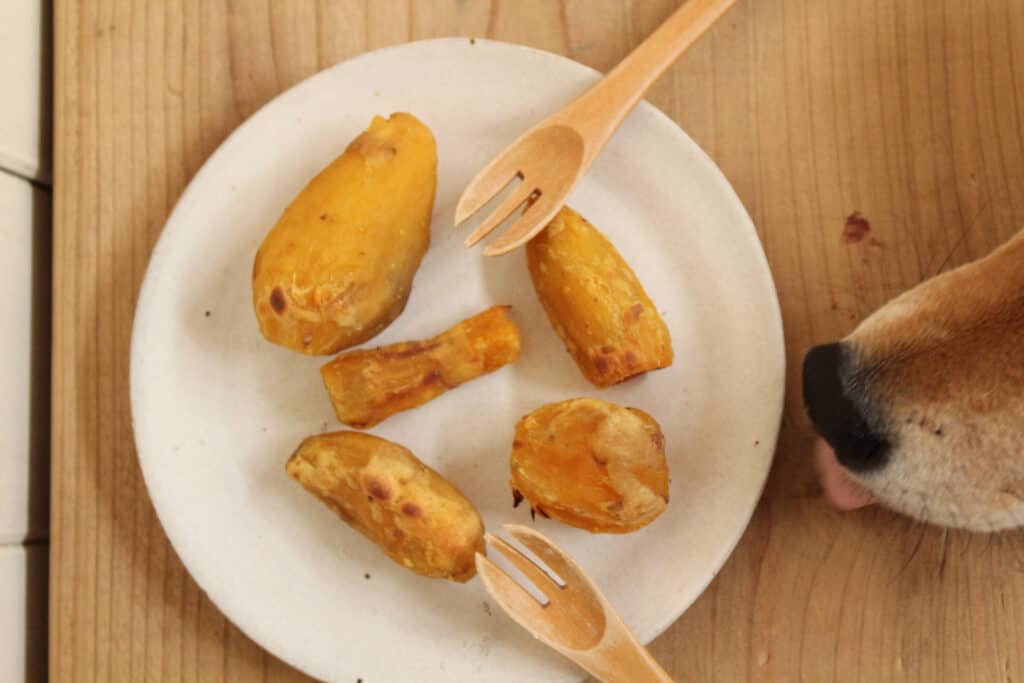
©yuzu/Shutterstock.com
5. Brussels Sprouts
Brussels sprouts are great for dogs in moderation, but can cause gas and stomach upset if fed too often. If you notice your pup with an upset tummy after eating a small amount of brussels sprouts, avoid feeding them again as they may be more sensitive than most dogs.
Otherwise, they’re very nutritious. They contain various vitamins, nutrients, and antioxidants.
Avoid serving raw or frozen brussels sprouts, because they can be difficult to digest. They’re also round, which makes them easy to choke on. Cutting them into small pieces can help.
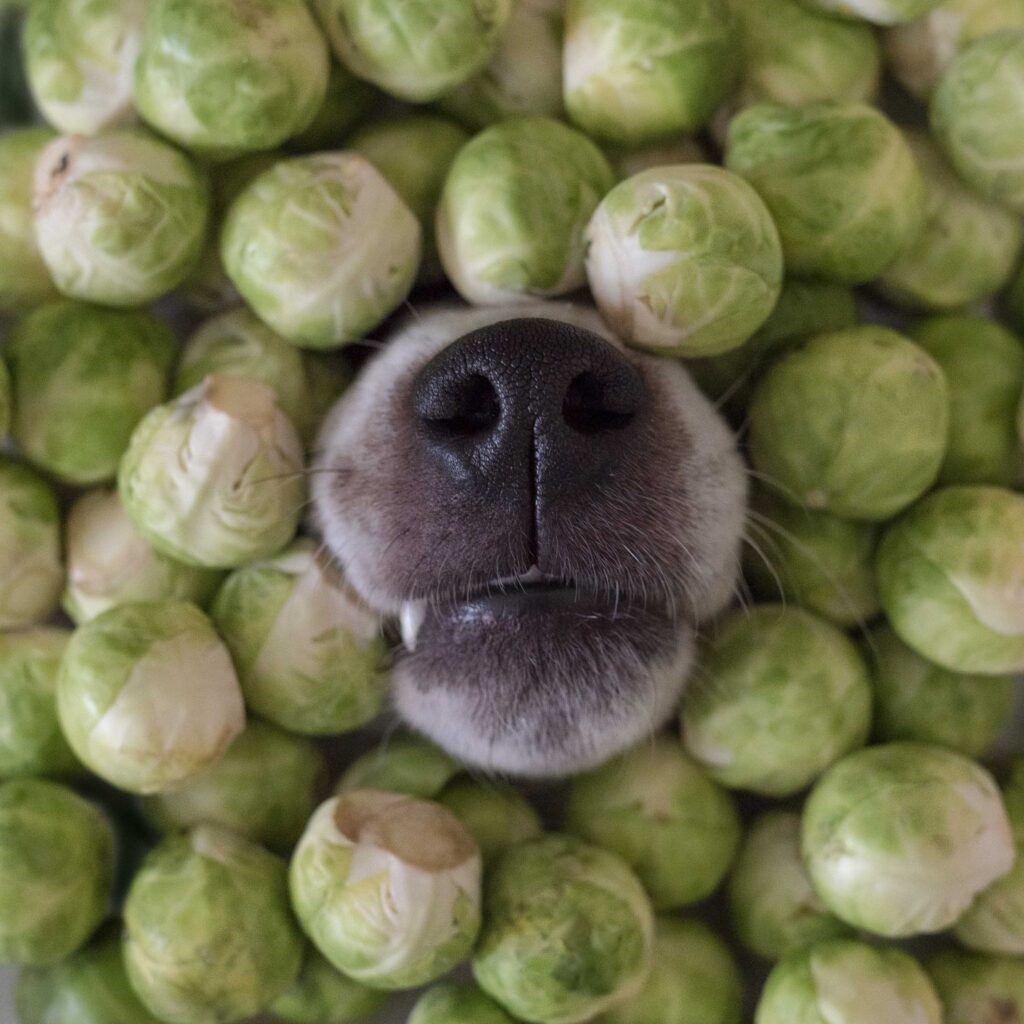
©Irina Filkova/Shutterstock.com
6. Celery
Celery contains fiber, vitamins, and nutrients that make it an excellent low-calorie treat. It’s also low in cholesterol, so it’s heart-healthy!
Cut celery into bite-sized pieces. Large sticks might be uncomfortable for your dog to eat, as stringy bits can get caught in their throat.
If you’d like, you can even add dog-safe peanut butter to make celery more palatable! Just make sure it doesn’t contain Xylitol, which is a sweetener that’s toxic to dogs.
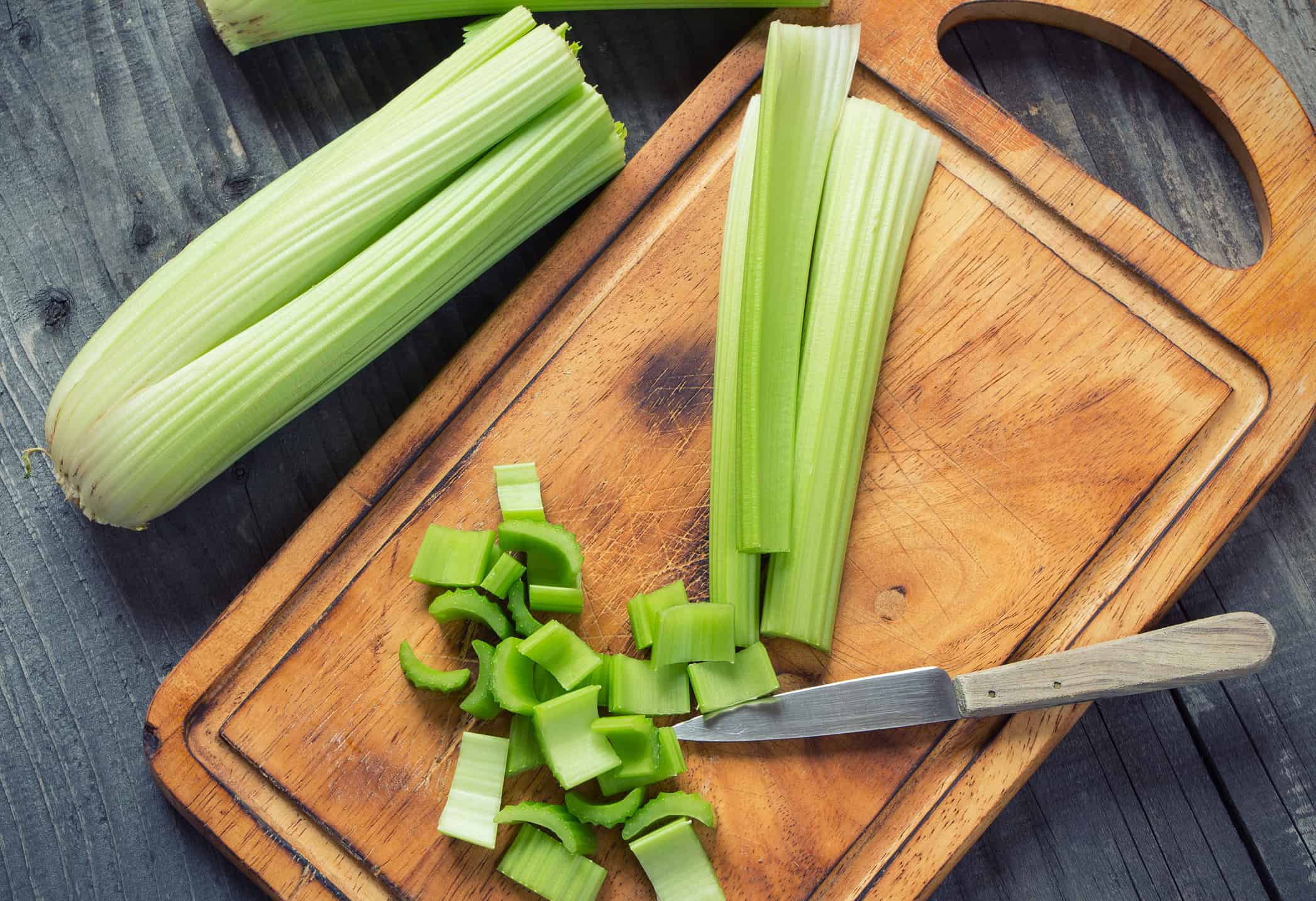
©iStock.com/Lecic
7. Zucchini
Dogs can eat cooked or raw zucchini. If you serve it cooked, be sure not to add any spices, oils, butter, or salt.

©Pixel-Shot/Shutterstock.com
8. Cauliflower
Cauliflower contains vitamins K and C. It also contains plenty of nutrients, including fiber, calcium, potassium, and folate.
It can cause stomach upset, so be sure to feed it in small amounts only. A little bite of raw or cooked cauliflower as you prepare your own meal is just fine!
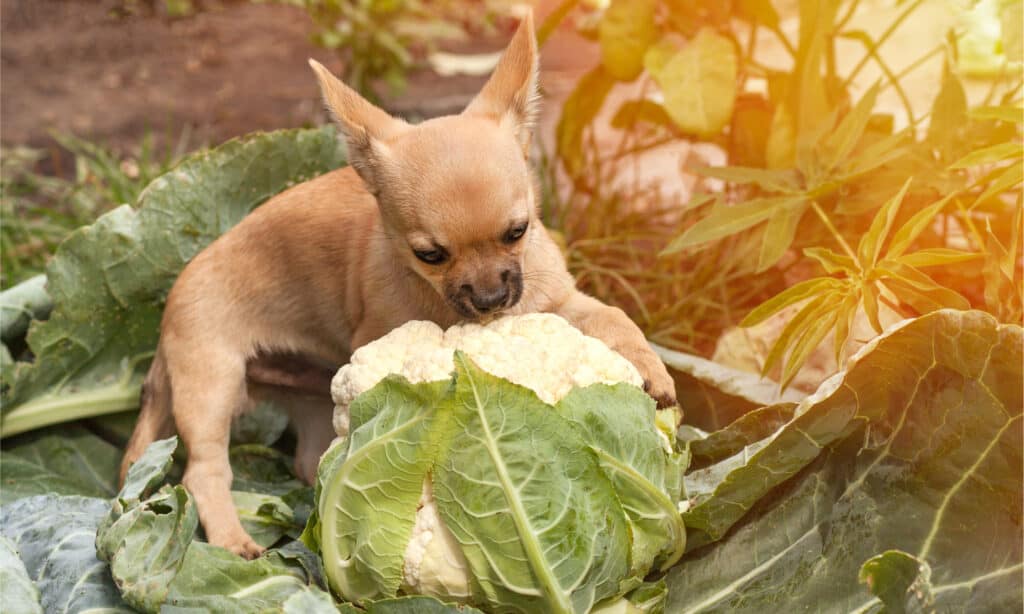
©victoriyasmail/Shutterstock.com
9. Beets
Dogs can eat beets cooked or raw and cut into very small pieces. Large pieces can be difficult to swallow and digest, especially if fed raw.
The American Kennel Club recommends shredding small amounts of beets for your dog, which can ensure they’re small enough to eat safely.
Beets can stain carpeting and furniture, so serving them in a room with hard floors for easy clean-up is best. Even better, feed them outside so you don’t have to worry about the mess!
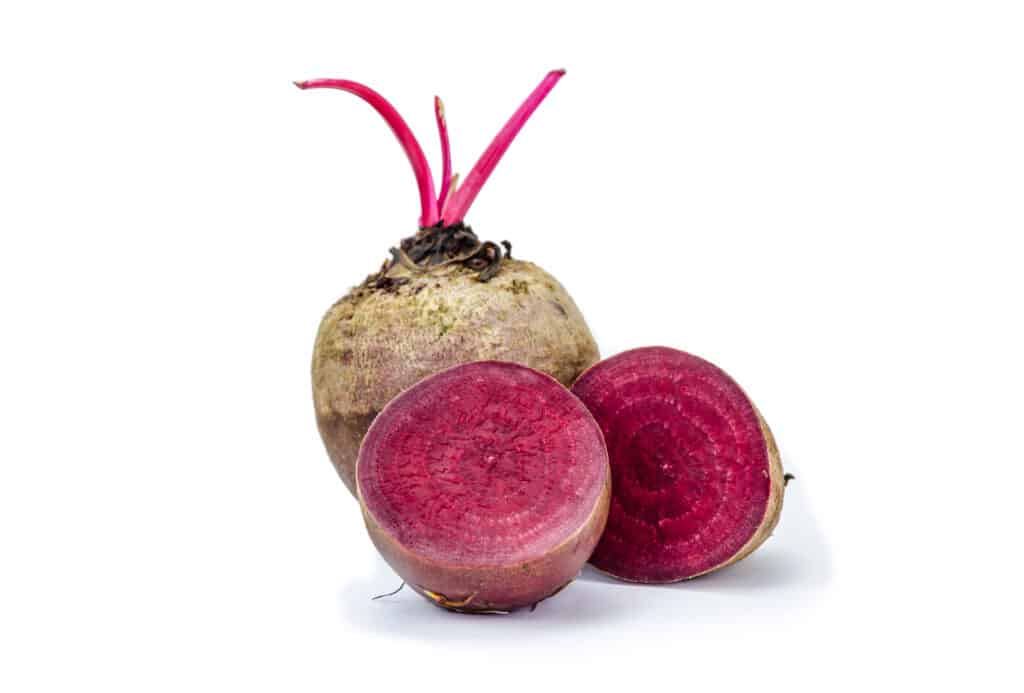
©Pingun/Shutterstock.com
10. Cucumber
Cucumbers are mostly water, so they aren’t the most nutritious veggie out there – and they can cause your dog to have the runs when fed in large amounts.
However, small amounts of cucumber are good for hydration, cooling off in the summer, and as a healthy yet tasty treat.
Though humans typically eat cucumbers with salt, it’s best to feed it to your dog plain – though a little salt won’t hurt if you’re feeding them off your plate.
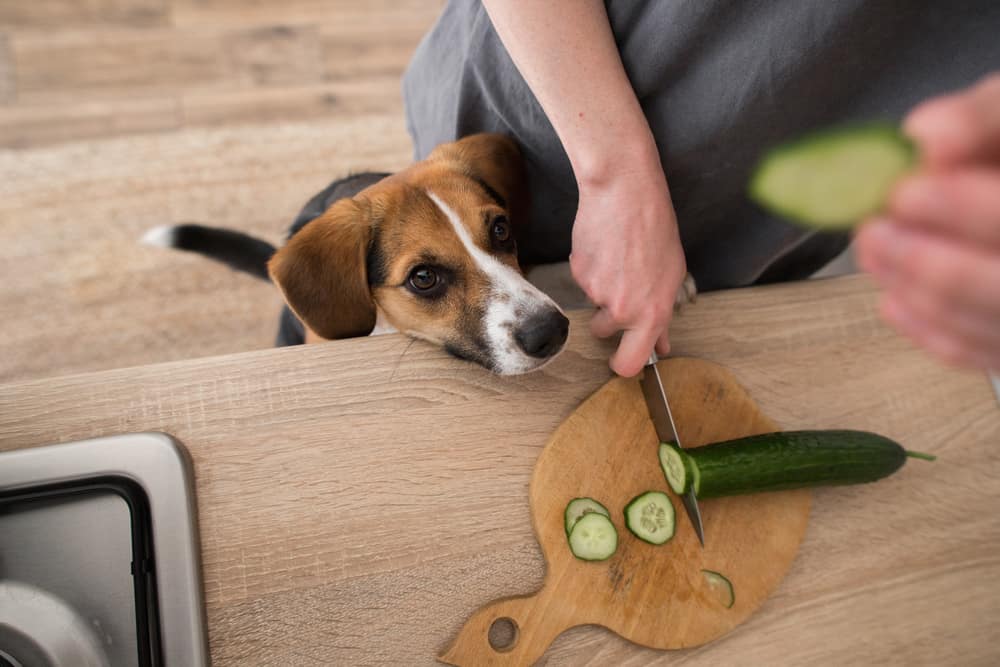
©Viktoriia Bu/Shutterstock.com
11. Butternut Squash
Dogs can eat the flesh of butternut squash, and it contains many nutrients that are good for them. Avoid feeding the rind as it is tough to swallow and digest.
To make it easy to digest, cook the squash without any added butter, oils, or seasonings.

©iStock.com/chengyuzheng
We hope this list has helped you find a new, yummy treat to feed your pup! Remember to restrict treats so that they make up 10{95221ed7c1b18b55d17ae0bef2e0eaa704ccc2431c5b12f9d786c88d1acb538d} or less of your dog’s daily diet, as they should primarily eat a balanced dog food.
Ready to discover the top 10 cutest dog breeds in the entire world?
How about the fastest dogs, the largest dogs and those that are — quite frankly — just the kindest dogs on the planet? Each day, AZ Animals sends out lists just like this to our thousands of email subscribers. And the best part? It’s FREE. Join today by entering your email below.
